Name Poul Henningsen | ||
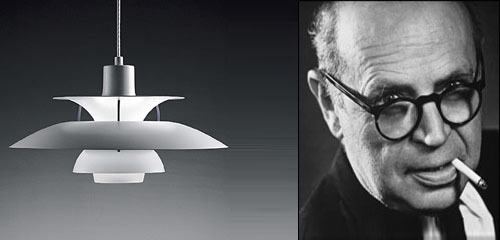 | ||
Movies Danmarksfilmen, PH lys, Den opvakte jomfru, Meninger i tiden, Kom frit frem Spouse Inger Henningsen (m. 1943–1967), Else Stroyberg (m. 1919–1942) Children Sten Hegeler, Simon P. Henningsen Similar People Sten Hegeler, Agnes Henningsen, Carl Ewald, Preben Neergaard, Lau Lauritzen - Jr | ||
Louis Poulsen PH 3½-3 Copper Limited Edition - Danish Speak
Poul Henningsen (9 September 1894 – 31 January 1967) was a Danish author, critic, architect, and designer, who was one of the leading figures of the cultural life of Denmark between the World Wars. In Denmark, he often is referred to, simply, as PH. His novel designs are featured in many museums. International interest in his work was revived during the 1960s.
Contents
- Louis Poulsen PH 3 3 Copper Limited Edition Danish Speak
- Poul henningsen style artichoke lamp
- Early life and education
- Architecture and design
- Literary career
- PH Quotations
- Works
- References

Poul henningsen style artichoke lamp
Early life and education
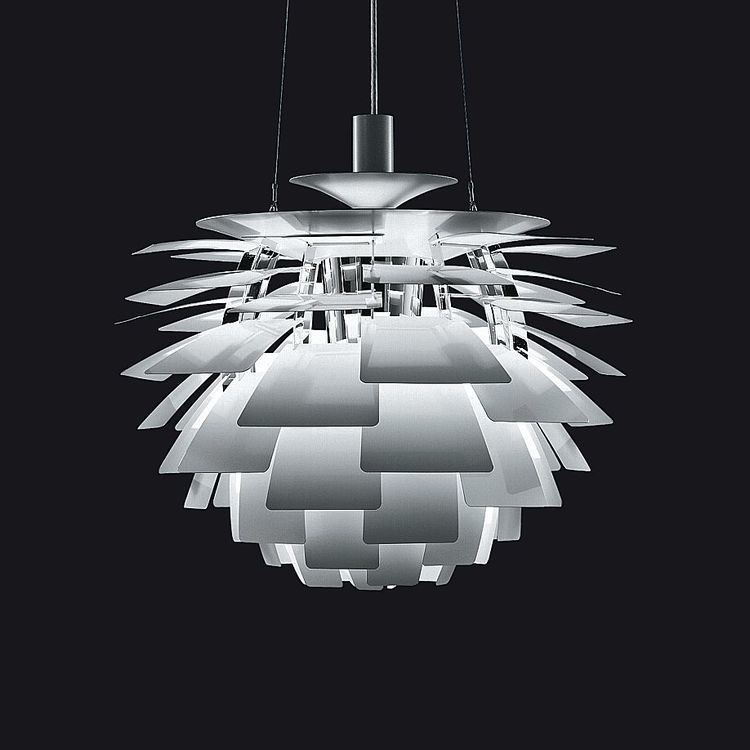
Poul Henningsen was the fourth child of author Agnes Henningsen through an extramarital relationship she had with satirist Carl Ewald following her first marriage, that had ended in divorce. He and his three half-siblings spent a happy childhood in their mother's tolerant and modern home in Ordrup, that often was visited by the leading literates.
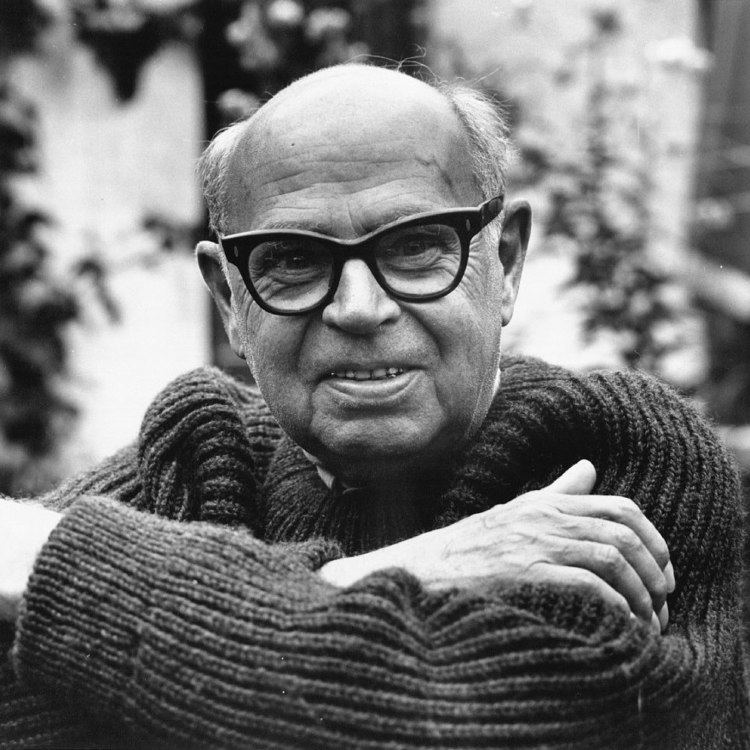
Between 1911 and 1917 he was educated as an architect, but he never was graduated, choosing to follow a career as an inventor and painter.
Architecture and design
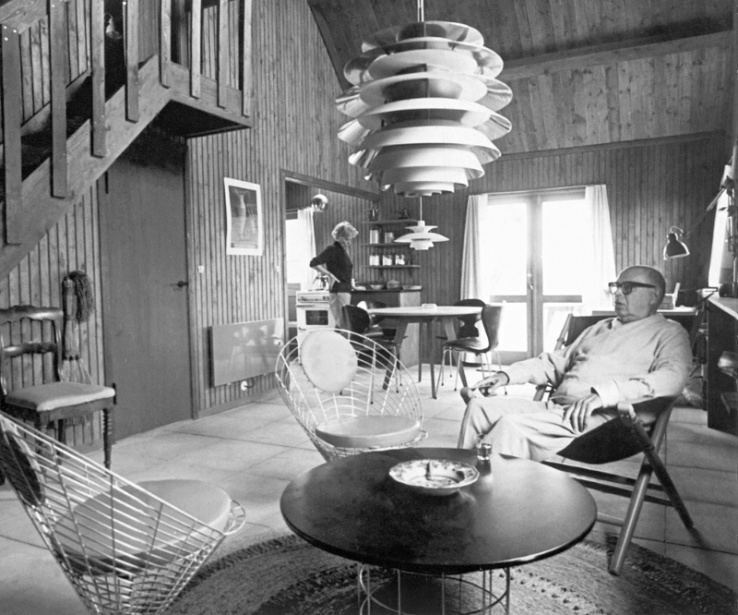
His most valuable contribution to design was in the field of lighting. He designed the PH-lamp in 1925, which, like his later designs, used carefully analyzed reflecting and baffling of the light rays from the bulb to achieve glare-free and uniform illumination. His light fixtures were manufactured by Louis Poulsen. His best-known models are the PH Artichoke and PH5.
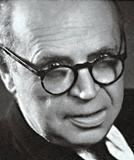
The lamps created the economic foundation of his later work. Manufacture and sale of some of his lighting fixtures, such as the PH5 Pendant Lamp, continues today.
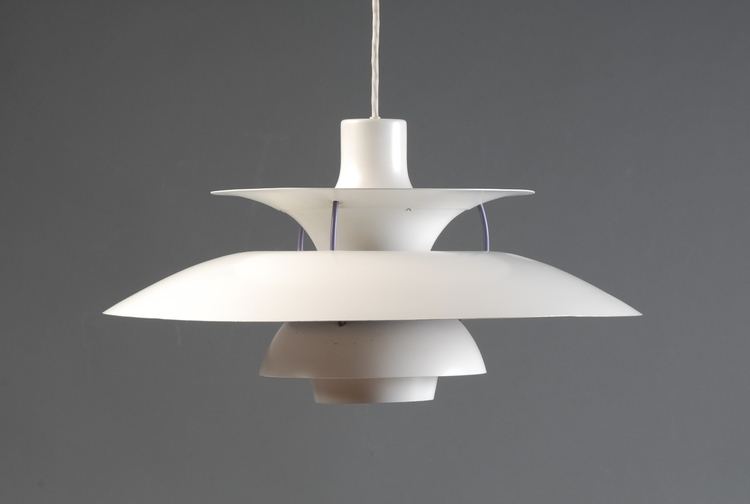
Other notable designs by him include the PH Grand Piano, examples of which are included in several prominent twentieth-century design collections, including that of the Metropolitan Museum in New York City.
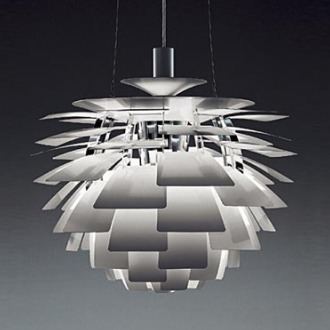
He also designed Glassalen for Tivoli Gardens in Copenhagen.
Literary career
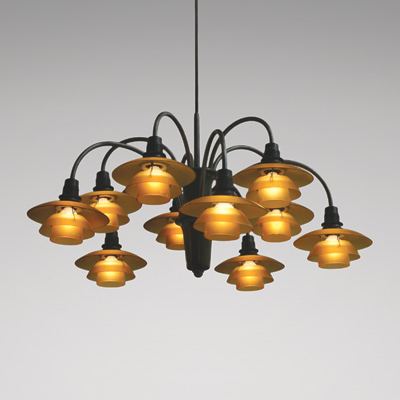
During the 1920s Poul Henningsen had his literary breakthrough. He edited the polemic left-wing periodical, Kritisk Revy (1926–1928, "Critical Review"), in which he and his colleagues scorned old-fashioned style and cultural conservatism, linking these themes to politics.
At the same time he began as a revue writer praising natural behaviour, sexual broad-mindedness, and simple living. He made the Danish revues a political weapon of the left-wing without giving up its character of entertainment (the so-called PH-revues 1929–32).
In 1933 he edited his most famous work, Hvad med Kulturen? ("What About Culture?"), a polemic, audacious, and urgent criticism of Danish cultural life and its snobism and passion of the past in spite of all the efforts of the Modern Break-Through. He tried to make parallels between prudery, moralizing, and fascist leanings. He also accused the Social Democrats of lacking a firm and consequent cultural line. Together with this book, his activities as a whole brought him a reputation as a semi-communist "fellow traveller". During this period, in fact, he stood near the communists without joining them. He took part in the anti-fascist propaganda, always trying to connect culture and politics.
Among his other initiatives of this period was Danmarksfilmen 1935, (English: The Film of Denmark), also known as PH’s Danmarksfilm. It is an unpretentious and untraditional film portraying life in contemporary Denmark in a lively and slightly disrespectful way in which the visuals are supported by jazz rhythms. Initially, it was condemned and decried by most critics, but later on it became rehabilitated as one of the classic Danish documentary films. He also wrote some movie manuscripts.
During World War II and the German Occupation of Denmark he kept a low profile and fled to Sweden in 1943, but he tried to keep the spirit going by camouflaged resistance poetry. After the war he dissociated himself from the communists, who were criticizing him for humanitarianism in his attitude toward the settlement with the Nazis and for his growing skepticism about the Soviet Union, and in many ways, he was isolated. He kept writing and debating, however, and during the 1960s in many ways, the new generation made him something of a guru. In his last years he became a member of the Danish Academy and supported the new movement of consumers.
In many ways Poul Henningsen is the one who completed the work of Georg Brandes. He is somewhat superficial and light, but more modern and less elitist in his views. Being a tease and a provoker who often tried turning concepts upside down (as George Bernard Shaw did) and whose conclusions might be both somewhat unjust and exaggerated, he was however, a man of firm principles and ideals of a democratic, natural, and tolerant society.
